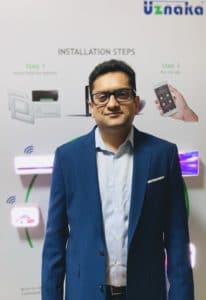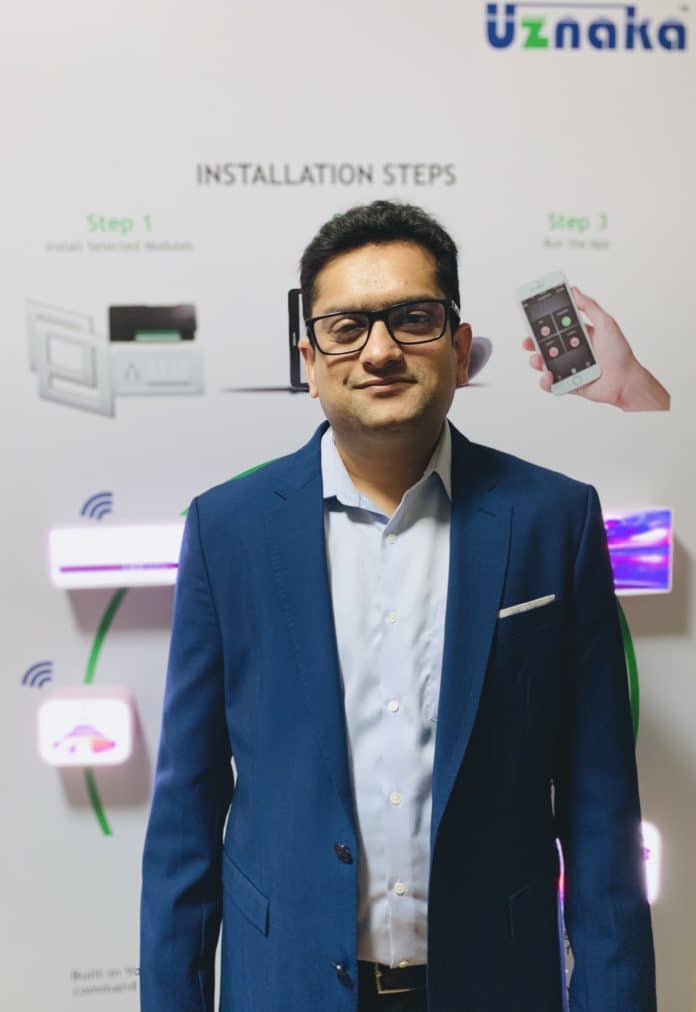To speed up the IoT revolution in the country, the evolution of a matured hardware ecosystem is the call of the hour. But how well are we prepared? Varun Goel, CEO of Uznaka Solutions, in an interaction with Baishakhi Dutta of the Electronicsforu.com Network sheds light on the topic while highlighting the obstacles that is curtailing the spread of IoT in the country.

Q) In your opinion, which are the top 3 technologies that are shaping the future of IoT? How are they influencing the future of IoT?
The core technologies can be listed as below:
- Cellular technology advancement
- Low power device-to-device connectivity, for example, LoRa
- Cloud Server Connectivity
These technologies are imperative for implementing any IoT based system or device. With the advancement in cellular technologies from 3G to 4G and now the introduction of 5G, the mobile data internet services are becoming better and more reliable which enables remote devices to work as a part of an ecosystem. Also, strong penetration of smartphones in the Indian market has generated huge demand for up-gradation of mobile-cellular networks.
Apart from connecting IoT devices with cloud servers through cellular networks, a strong local device-to-device connectivity is required which can enable devices to communicate with each other and form a mesh network to relieve the burden on the cellular network and connect only one gateway or device to cloud servers and save on overall operational costs. For this purpose, low power spread spectrum modulation techniques, such as LoRa, are necessary for making the IoT ecosystem viable and scalable.
Cloud server connectivity is the heart of any IoT system which should support the smallest of the independent devices to connect efficiently with the cloud server. Cloud server technologies such as MQTT and Firebase have enabled the devices to connect and respond to cloud server with a minimal time lag and with the highest efficiency by consuming least of the resources.
Q) Between the cellular and NB-IOT/LPWA families of wireless technologies–which one are you betting upon? Why?
NB-IoT/LPWA is short distance device-to-device communication protocols which can connect devices within ranges of 5-10 KM. However, to connect any device with the cloud server and make it IoT enabled, cellular networks are necessary to provide access to the internet through data services.
As both the wireless technologies are necessary to make a system IoT enabled and work in any remote location, we are betting on both the technologies. With the advancement from 4G to 5G in cellular networks, the future of connectivity will be enhanced with higher data transfer rates available which will enable even video streaming in real-time for monitoring and measuring processes and for surveillance.
Q) How’s the development of standards (or lack of it) affecting the adoption of IoT?
Standardization in IoT space is the biggest challenge at present, as every provider is using a different standard and communication technology when it comes to local device-to-device networking. When it comes to implementing solutions, every provider is using a different approach and standard which makes IoT systems vulnerable to hacking.
There needs to be a standard(s) for either the whole ecosystem or based on applications. This will also make adoption of IoT easier for the users as the providers can no longer misguide the customers and will have to provide systems with quality standards as defined by a governing body.
For instance, when it comes to home automation, there are more than 50 companies in India which are providing varied standards of device-to-device local communication. This makes decision making for the end-user very difficult based on variable prices and quality standards.
Q) How ready is India’s tech ecosystem to develop and deploy IoT solutions?
The tech ecosystem for IoT is a convergence of both electronics and software systems design which requires bringing both the software and electronics design industry together. The software development and design industry in our country is one of the most prominent in the world and can take on any challenge when it comes to developing and serving the IoT ecosystem. However, when it comes to electronics design, the industry is not very strong in India and even veteran players are not provided with growth opportunities.
India requires a well-equipped electronics hardware ecosystem which will be the key driving factor for IoT in the country. There must be a paradigm shift in the thought process of developing/manufacturing products in India.
I feel, with reference to the Indian software industry, it is now time to converge with electronics to be ready for the next revolution which is just a few years away. It will change the entire business dynamics of the software industry.
Q) Do you foresee India’s tech industry developing its own IP and branded products/solutions in the IoT arena?
India’s tech industry is already working towards making branded solutions and products in IOT but only in a few sectors such as home automation and vehicle tracking devices. When it comes to IP, as cited earlier, the software and electronics hardware industries will have to join hands supporting each other to create standards and protocols enabling IoT systems to communicate and work in comprehension.
Q) Do you see the Open Source phenomenon play an important role in the IoT arena?
Open source platforms will help the IoT ecosystem to expand rapidly and have a better reach and penetration. With the help of open-source platforms, research and learning can be done easily, thus helping students and enthusiasts to implement and learn new concepts. It will also enable budding startups to make it possible to implement and test ideas before transforming them into a final product or even use the platforms for products and services commercially.
An open-source platform is only viable when standardizations are in place for the IOT ecosystem, which at present is not there.
Q) How do you see the role, technologies like AI/ML will play in the evolution of IoT solutions?
AI/ML is the core to IoT for making full use of IoT devices to implement security and ease of interaction with humans.
This can be better explained with an example if a house is equipped with a smart lock and a smart air conditioner which is IOT enabled, the system can learn and recognize the pattern of the homeowner as to what time is the owner performing which activity. The air conditioner can switch ON automatically based on the arrival pattern of the occupant. Also, similarly, the lights can be dimmed by the system automatically by sensing the sleep pattern of the occupants and help in conserving energy and providing a comfortable and luxurious lifestyle.
ML/AI will play an important role in providing ultimate user experience and efficient services.
Q) What’s your opinion on the state of security available for IoT solutions? How do you see the evolution from here on w.r.t threats and countermeasures?
The state of security available at present in IoT systems/solutions requires standardization and a lot of work and investment from the software and protocol point of view. The data is transmitted and stored at the cloud server level needs to be secure and blockchain concept must be integrated into IoT solutions to secure the transactions taking place between devices and servers. Again, it is the coordination of software and hardware designing that will act as a catalyst for creating a safe and secure ecosystem for IoT.
Q) W.r.t. edge vs cloud–where do you think will we see faster development in the next year or two?
Edge and cloud both are fast developing and advancing technologies. Cloud is a technology where more organizations are working on; whereas edge is a technology of telecom domain which is evolving at a fast rate, but the implementation is cost-intensive and requires a lot of time to implement. On the contrary, the cloud is expensive to enhance but the cost of implementation and deployment is not as high as that of edge. I foresee in the next couple of years, both edge and cloud technologies will be advancing at a rapid pace. However, cloud technology is the one which will benefit the most.
With nearly all the devices, including cars, becoming connected through the cloud, the advancement in both the technologies is a must to have sustainable growth in the IoT space.
Q) What are the key technologies missing, which when made available, will accelerate the adoption of IoT across the globe?
The key missing technologies would be security, low power short-range device-to-device communication standards, which when standardized and made available as an open-source platform will catalyze the growth of the IoT across the globe. This will also help consumers have a clear idea of what they need to know while implementing IoT in their personal space and help the industry grow at a faster pace.
Q) Any thoughts on where to go edge versus where to go cloud?
Cloud and edge are synonymous to each other and go hand in hand. Wherever there is an implementation of IoT, the edge is the technology that provides the path for communication and cloud is the platform that provides interconnectivity and computational power. So, to implement any solution both cloud and edge are required to be integrated into any solution. However, the edge is more required in open field implementations as internet through optic fiber and WIFI is not available and the system relies on edge connectivity only.









